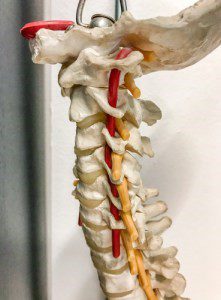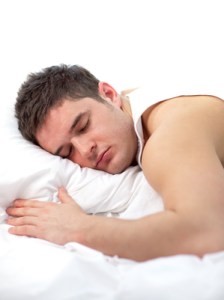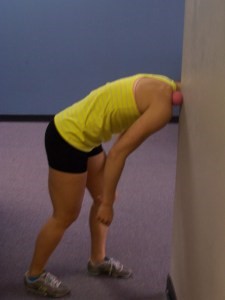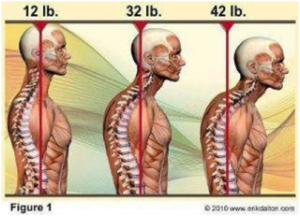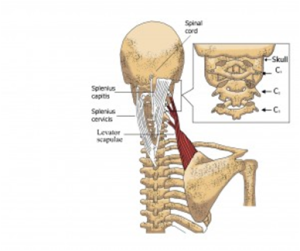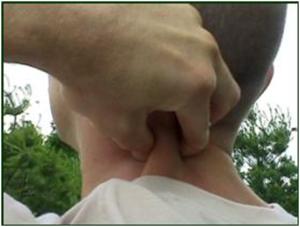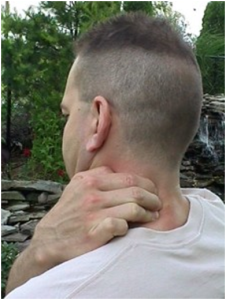Wake Up Each Morning Pain Free
Author: Julie Donnelly, LMT – The Pain Relief Expert
Editor: Dr. Steve Chaney
 The way you sleep is often a key to discovering the cause of headaches and more. If you wake up with neck pain, a headache, or you suffer from ringing in your ears, dizziness, or ear pain, there is a good possibility that it may be caused by the way you are sleeping. Your pillow may be the culprit. But if you need to know how to choose the right pillow for you, it’s easy. It just takes a little “investigation.”
The way you sleep is often a key to discovering the cause of headaches and more. If you wake up with neck pain, a headache, or you suffer from ringing in your ears, dizziness, or ear pain, there is a good possibility that it may be caused by the way you are sleeping. Your pillow may be the culprit. But if you need to know how to choose the right pillow for you, it’s easy. It just takes a little “investigation.”
How to Choose the Right Pillow if You Sleep On Your Side
Your head, neck, and spine need to always stay in a nice straight line, just as it is when you are standing up, but that takes a little thought and understanding of the way you sleep. So, get comfy in your bed and then notice how your head is resting.
 If you sleep on your side, your pillow needs to be just the right size, so your head doesn’t point down toward the mattress (your pillow is too soft) or up to the ceiling (your pillow is too thick). Either of these positions will make the muscles on the side of your neck stay in the contracted position for hours and pull your vertebrae in that direction, especially when you try to turn over to your other side.
If you sleep on your side, your pillow needs to be just the right size, so your head doesn’t point down toward the mattress (your pillow is too soft) or up to the ceiling (your pillow is too thick). Either of these positions will make the muscles on the side of your neck stay in the contracted position for hours and pull your vertebrae in that direction, especially when you try to turn over to your other side.
Your SCM Muscle May Cause Serious Problems
You also need to notice if you turn your head a bit, especially if you are turning into your pillow or turning your head up toward away from your pillow. In either of these two cases you will be causing your sternocleidomastoid (SCM for short) to be held shortened for hours.
Your SCM originates on your collarbone and inserts into the bone behind your ear. When it contracts you turn your head to the opposite side. However, if the muscle is tight (for example, when you’ve held your head turned toward one side for an extended period of time) and then you bring your head back so you are facing forward, the tight muscle will pull on the bone behind your ear and cause havoc.
The symptoms for a tight SCM are tinnitus (ringing in the ear), dizziness, loss of equilibrium, ear pain, headaches, pain in the eye and around the skull, pain at the top of the head, and even pain in the throat. Amazing! What’s even more amazing is that it’s rare that this muscle is considered when a medical professional is searching for the cause of your symptoms.
These are the things to know when considering how to choose the right pillow if you sleep on your side.
How To Choose The Right Pillow If You Sleep On Your Back
 If you sleep on your back, your head should be on the mattress (not propped up with a pillow) and you should have a tiny support (like a folded washcloth) under your neck. Or, you can have a wedge pillow that starts at your mid-back and gently raises your entire trunk and head up while still allowing your head and back to be in a straight line.
If you sleep on your back, your head should be on the mattress (not propped up with a pillow) and you should have a tiny support (like a folded washcloth) under your neck. Or, you can have a wedge pillow that starts at your mid-back and gently raises your entire trunk and head up while still allowing your head and back to be in a straight line.
It’s always a challenge for people who toss and turn during the night, sometimes on their side and sometimes on their back. The best thing I’ve found for this situation is to have the pillow below shoulder level so when you turn on your side your shoulder will automatically slide to the edge of the pillow while still supporting your head properly, and when you turn onto your back, the pillow will start at shoulder level so your head and neck are supported, but your head is being pushed in a way that causes your chin to move down to your chest.
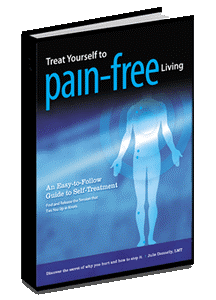 It’s tricky, but I can personally attest to the fact that it will work. I can always tell when I’ve had my head tilted (I toss and turn during the night) because I will wake with a headache. When that happens I’m grateful that I know how to self-treat the muscles of my neck and shoulders so the headache is eliminated quickly. If you already have Treat Yourself to Pain Free Living, you can self-treat all your neck and shoulder muscles to release the tension.
It’s tricky, but I can personally attest to the fact that it will work. I can always tell when I’ve had my head tilted (I toss and turn during the night) because I will wake with a headache. When that happens I’m grateful that I know how to self-treat the muscles of my neck and shoulders so the headache is eliminated quickly. If you already have Treat Yourself to Pain Free Living, you can self-treat all your neck and shoulder muscles to release the tension.
How To Choose The Right Pillow If You Sleep On Your Stomach
If you sleep on your stomach, this is the one position that is so bad that it behooves you to force yourself to change your position. Your head is turned to the side and held still for hours, putting a severe strain on all your cervical and upper thoracic vertebrae. Not only will this cause headaches, tinnitus, and a list of other pains, but it can cause problems down your entire spine. It can also impinge on the nerves that pass through the vertebrae on their way to your organs.
If you do sleep that way, let me know and I’ll give you some suggestions that work to change your habit of sleeping. It takes time and energy, but the results are worth the effort.
In every case, the way you sleep may cause neck pain that won’t go away until the pillow situation is resolved.
Now you should know how to choose the right pillow for the way you sleep.
Wishing you well,
Julie Donnelly
About The Author
Julie Donnelly is a Deep Muscle Massage Therapist with 20 years of experience specializing in the treatment of chronic joint pain and sports injuries. She has worked extensively with elite athletes and patients who have been unsuccessful at finding relief through the more conventional therapies.
She has been widely published, both on – and off – line, in magazines, newsletters, and newspapers around the country. She is also often chosen to speak at national conventions, medical schools, and health facilities nationwide.
These statements have not been evaluated by the Food and Drug Administration. This information is not intended to diagnose, treat, cure or prevent any disease.


